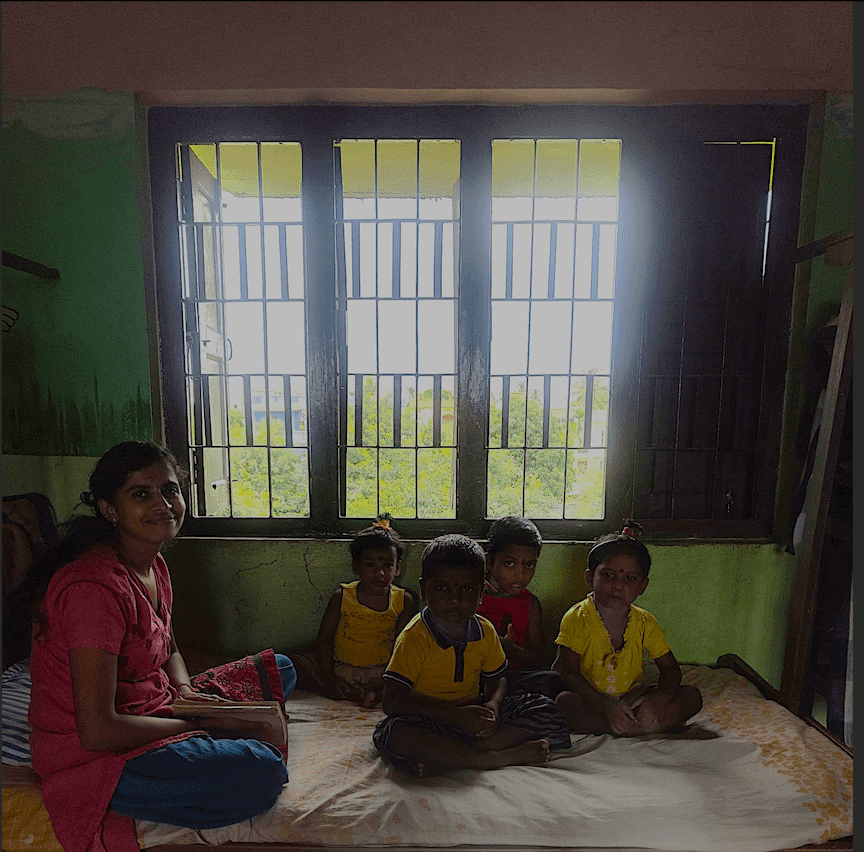As I step into the establishment, my eyes are drawn to a rectangular gap carved into the wall - a cradle swings in its place. I keep walking, shoving down the tide of emotion beginning to bubble. I have a job to do.
“Yes, children get abandoned, that is a reality I have been aware of. I cannot be bogged down by harsh truths if I want to help fix them”.
I enter the matron’s office. True to the graciousness I’ve come to associate with Odia people, I’m welcomed by four officials eager to speak with me. I explain that I’m here on behalf of the Department of Women and Child Development, that we’re launching a program for adolescents, focused on preparing them for life beyond school, and want to understand the Child Care Institutions (CCI) setup to design something that truly fits.
They are happy to share. This CCI houses 96 children - abandoned, orphaned, or survivors of abuse. It’s one of only two CCIs in Cuttack that also run an affiliated adoption agency, which means they care for toddlers too.
I listen intently. I can see the administration is deeply attached to the children. There’s something comforting about that. I feel a weight I hadn’t realized I was carrying, being lifted. After our discussion, I ask to have a look around the place. The case-worker, a warm middle-aged woman in a cotton saree, excitedly gets up to show me around.
I observe closely as we walk. Reading the cracks on the walls, I have found, is just as useful as reading between the lines, during these visits. But today, I am happy to be distracted from the walls. I listen to the case worker, bright-eyed and earnest, as she walks me through each room, narrating the children’s routines with pride. She tells me how mornings begin with yoga and prayer, about school timings, favorite meals, art sessions that end in a mess, and the occasional fight.
We move from the administrative block to the residential quarters. I climb a stairwell covered with wall art - bright and full of character. Anyone who’s spent time in Odisha knows that the people love painting their walls. This quiet, deliberate instinct finds its way onto every vertical surface that will have it. This place is no exception.
We start with the nursery.
The moment I step into the corridor, I’m greeted by the unmistakable scent of baby powder and milk formula. The walls are peeling, but the space is spotless. I walk into the first room: five cradles line the walls, each with a baby nestled inside.
Photo from the CCI visited in Odisha
Before I say any more, let me highlight, I’ve never been particularly drawn to babies. I’ll pause at a cute video, maybe share it with a friend, but that’s the extent of it. So, I find what followed very hard to explain, but stepping into that room gave my soul goosebumps. It was as if I had time-traveled to a cot of my own. Lying on my back, I was watching the sunlight dance on the ceiling, filtered through leaves of a swaying tree outside. The air was rain-fresh. I felt safe, cocooned. I knew my parents were nearby. I knew everything would be okay.
One baby isn’t asleep, and I am instantly drawn to him. He’s grabbed both his feet and is swaying in his cot happily - gurgling and giggling - I can only suppose at the size of his feet. I walk to him and smile. He pauses, looks at me with wide eyes, and then breaks into another giggle, like we’re in on a private joke about our tiny feet (I wear size 4). In that moment, nothing else mattered. The task, the briefing, the plan - it all blurs. I just want to stay. To sit with him. To tell him somehow that everything will be okay. Like I knew, all those years ago.
But for now, I let the brush of my fingertips against his soft cheek suffice. Beside me, the case worker smiles at him too. It’s warm at first. Then it fades. “Ye bhi POCSO case hai,” she says quietly.
I carry the pieces of my shattered heart as we continue the tour. I hear more stories - some too horrific to fully process. Girls, barely teenagers, already mothers multiple times over. Boys abandoned, abused. A Bangladeshi girl who escaped her family and is now helping the police catch criminals. I keep my reactions in check, ask what I need to, and smile where I can.
It’s been hours since I returned.
But the image of that happy baby boy is burned in my brain - too young to name grief, too young to flinch.
I don’t know where to keep that innocence.
So today I wrote.
Maybe that’s something. Maybe it’s nothing.
The CCI ecosystem in Odisha
Child Care Institutions (CCIs) in Odisha form a vital network dedicated to providing shelter, care, and protection to vulnerable children - those who are abandoned, orphaned, or survivors of abuse. These institutions are monitored by the Department of Women and Child Development and often collaborate with adoption agencies and support services. The ecosystem is diverse, encompassing both government-run and private homes, and is focused on ensuring the safety, rehabilitation, and holistic development of the most vulnerable children.
Purpose of the visit:
We visited CCIs as part of an effort to better understand the daily realities and challenges faced by such institutions in Odisha. The objective was to inform the design of adolescent programs that are genuinely responsive to the needs of children in institutional care.
The goal of the SUBHADRA program:
Our work through SUBHADRA goes beyond direct financial assistance. By engaging with institutions like CCIs, we aim to create an enabling environment that supports women’s long-term economic empowerment. The goal is to unlock sustainable economic pathways by creating employment and enterprise opportunities for women across Odisha.

